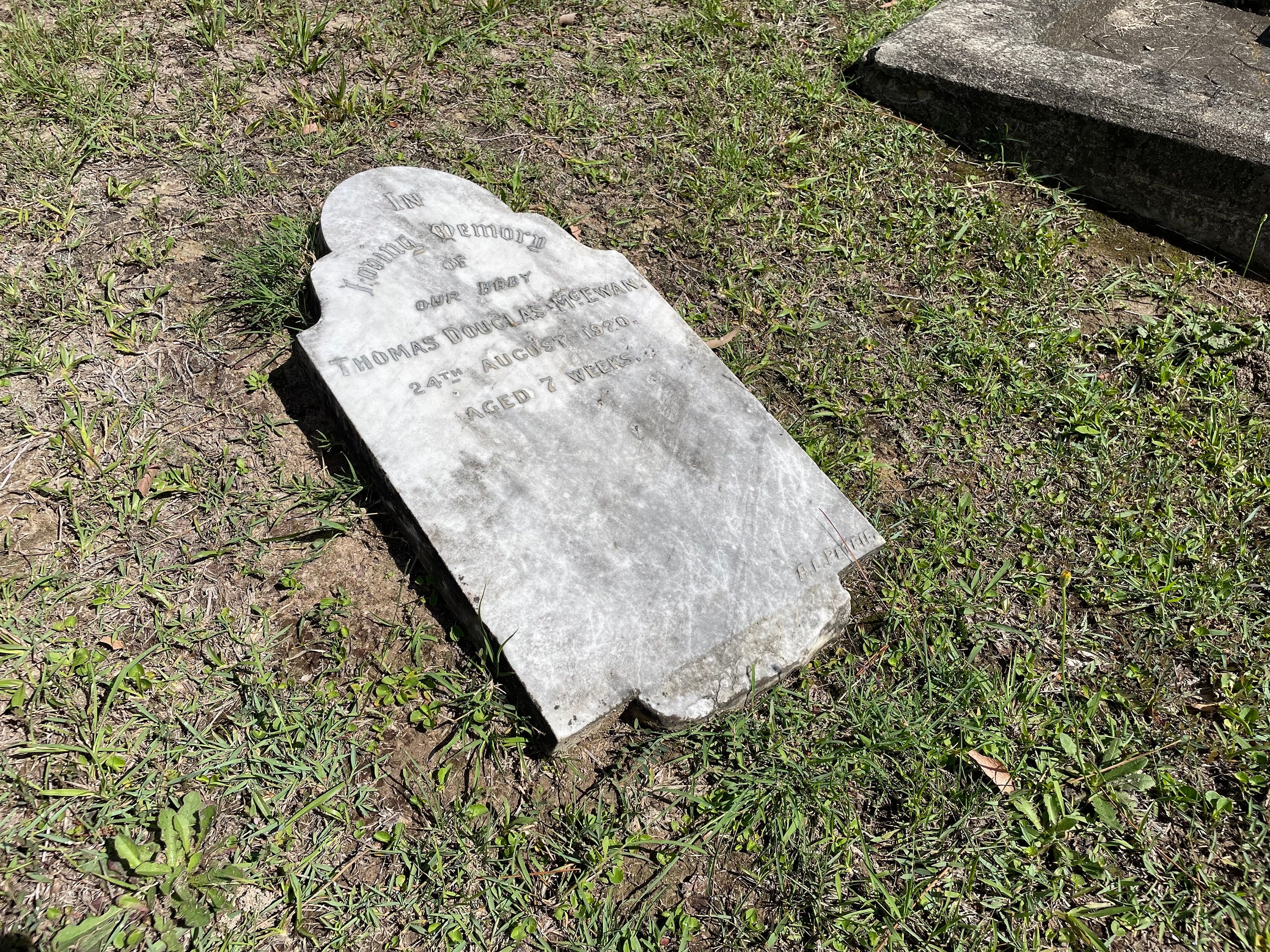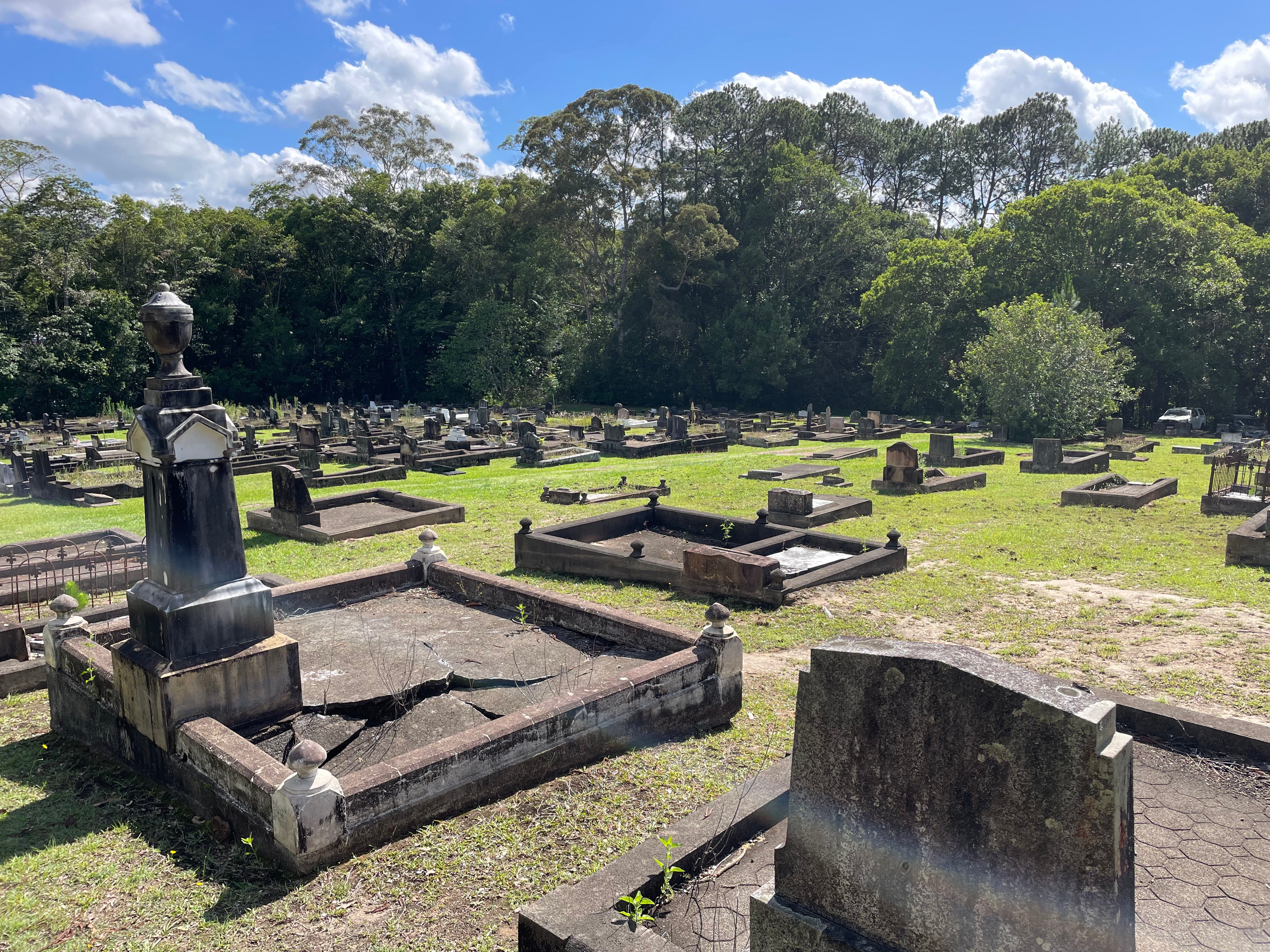Unearthing the stories of Sunshine Coast cemeteries
The lives and deaths of local pioneers reveal gripping stories of hardships and hangings, triumph and tragedy, ingenuity and innovation, mischief and murder.
Ornate gravestone at Old Nambour Cemetery
From the coast to the hinterland, the Sunshine Coast’s public cemeteries are more than resting places—they’re rich with stories of community, resilience, and remembrance.

Award winning historian, researcher and author Dr Lisa Murray was Council’s 2024 Historian-in-Residence and her research reveals how locals shaped these sacred spaces.
Discoveries
In the late 1800s and early 1900s, communities petitioned the government, donated land, and held working bees to establish cemeteries. Diddillibah Cemetery, for example, was created in just two months thanks to Henry A. Keil’s land donation and leadership.
Some cemeteries tell tales of tragedy and heroism. Witta Cemetery holds the grave of Mitchell, an Aboriginal man who died in 1919. His headstone, funded by Landsborough Shire Council, is a rare and respectful tribute.
At Nambour Cemetery, Claude Bonner Nosworthy is remembered for sacrificing his life to save others from drowning in 1922.
Cemeteries also reflect changing times. Nambour Garden Cemetery, opened in 1960, was one of Queensland’s first regional lawn cemeteries, complete with fountains and landscaped gardens. Meanwhile, Buderim Cemetery’s elegant entrance gate was funded by benefactor Mrs Isola Frederic in memory of her husband.

From cast iron grave markers to ceramic wreaths, the memorial styles speak volumes about the era, craftsmanship, and families who cared deeply. Today, these cemeteries remain places of quiet reflection, heritage, and connection.
Whether you’re a history buff or nature lover, a visit to your local cemetery might just reveal a story waiting to be told.
Free heritage talk
Dr Murray will present her findings at a free talk Friday 10 October at Landsborough Museum.
Historian in Residence report
Dr Murray’s Sunshine Coast Cemeteries report offers a rich and detailed history of the region’s public cemeteries. It explores their establishment, management, cultural significance, and evolution from the 1870s to the late 20th century.
Denominations
Cemeteries were often divided into denominational sections, though Queensland’s approach was generally nonsectarian. Maintenance was a challenge, especially in early years with few burials. Communities held fundraising events—euchre parties, dances, and fairs—to support upkeep.

Headstone style
The report also explores headstone styles and costs. Marble and granite were dominant materials. In 1924, a marble headstone cost £4–£32, while granite monuments reached £55. Cast iron grave markers, timber crosses, and ceramic immortelle wreaths were more affordable and common in earlier decades.
Symbolism on graves reflected religious faith, remembrance, and personal values—crosses, angels, doves, ivy, lilies, and clasped hands were frequent motifs. Grave decorations evolved from timber enclosures to concrete stamping and glazed tiles.
Landscape and wildlife
Witta Cemetery is home to koalas; Mapleton offers bird-filled forest surrounds; Beerburrum sits within a national park. Nambour Garden Cemetery, opened in 1960, was one of Queensland’s first lawn cemeteries, featuring fountains and landscaped gardens.
More discoveries
- Eva Browne’s memorial: A rare carved hardwood headstone (1897) by George Brinkley, originally in Diddillibah Cemetery, now preserved at Landsborough Museum.
- Cast iron grave markers: Rare survivors in Nambour and Mooloolah Cemeteries, featuring weeping widow motifs from the Etna Foundry and Lassetters catalogue.
- Mooloolah Cemetery’s orientation: Some graves predate its official gazettal and are aligned differently, offering clues to early burial practices.
- Immortelle wreaths: Ceramic and metal wreaths under glass domes were popular from 1900–1950s, later replaced by majolica decorations.
- Community activism: Eumundi’s cemetery was revived by the local Progress Association after years of neglect, showing the power of civic engagement.
